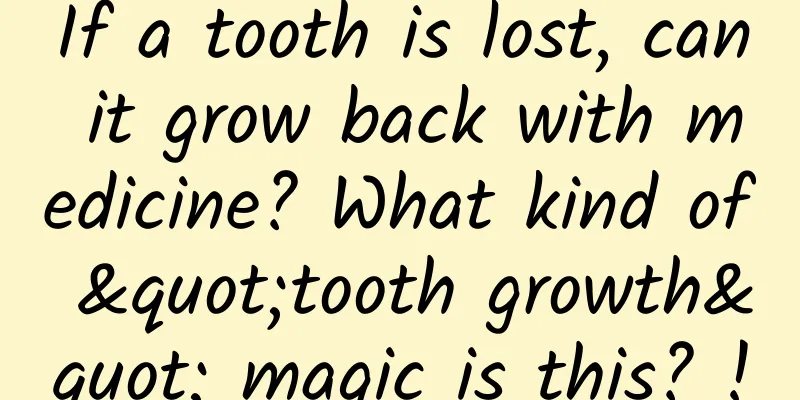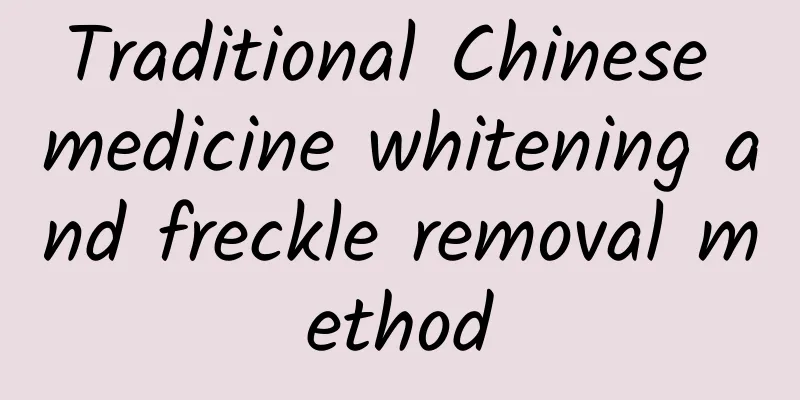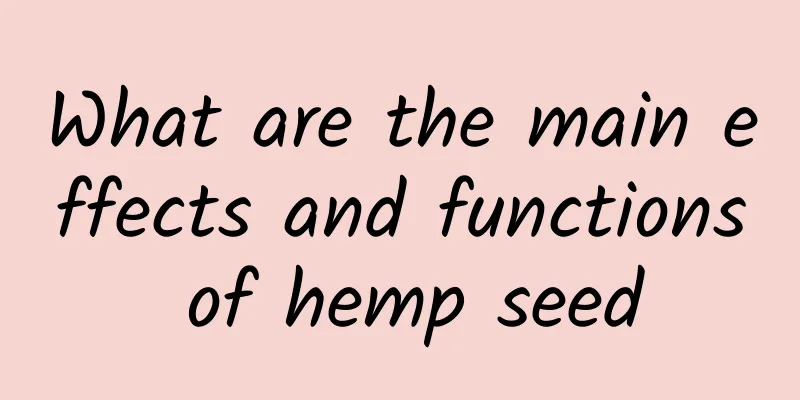If a tooth is lost, can it grow back with medicine? What kind of "tooth growth" magic is this? !

|
Author: Huang Yanhong, Huang Xianghong, Duan Yuechu Teeth are vital to our daily lives. However, whether it is congenital tooth loss or tooth loss due to tooth decay, injury, etc., it brings a lot of inconvenience to people. Although common treatments such as dentures and dental implants can make up for missing teeth to a certain extent, they are ultimately not comparable to naturally grown teeth. However, a recent new study by Japanese scientists may bring a new solution to this problem. During the long process of evolution, mammals, including humans, gradually lost the ability to continuously regenerate teeth like sharks. For some rodents, such as mice, they only have one set of teeth in their lifetime, and once the teeth fall out, they cannot regenerate. In contrast, humans are in a slightly better situation. They grow deciduous teeth during infancy and are later replaced by permanent teeth. Once permanent teeth are lost, new teeth usually do not grow out. Katsushi Takahashi, chief researcher and chief of dental and oral surgery at Kitano Hospital, the Institute of Medical Sciences in Osaka, Japan, has been working on finding a way to help people regrow teeth since he was a bachelor's student in dental medicine and later as a graduate student in molecular biology. Many people in the world are born with missing teeth, which causes great trouble in their lives. Congenital tooth loss may be caused by genetic defects or environmental factors in early development, such as viral infections. Over the years, researchers around the world have discovered some genes related to tooth loss. Around 2005, Takahashi returned to Japan to continue his research and made an important discovery in a disease that is the opposite of tooth loss: "excessive teeth." Previous studies have shown that mice that lack the gene that synthesizes the USAG-1 protein have more teeth. After years of exploration, Takahashi's research team has clarified the mechanism. Usually, deciduous teeth are called the "first dentition" and permanent teeth (except molars) belong to the "second dentition". Generally, there will be no new teeth after these two rows of teeth. However, some studies have pointed out that humans and some mammals have the potential to develop new dentition epithelial tooth bases on the tongue side of permanent teeth, but they will die during growth under normal circumstances. The USAG-1 protein can inhibit bone morphogenetic protein (BMP) and Wnt during tooth development. Patients or mice with "excessive teeth" often have defects in the gene encoding USAG-1, which prevents BMP and Wnt signals from being effectively inhibited, resulting in the growth of some new teeth. Based on this discovery, Takahashi's team successfully developed a neutralizing antibody that can inhibit the binding of USAG-1 to BMP in 2018, and was successful in experiments on mice and ferrets, allowing them to grow normal-shaped teeth with no side effects. Now, they have further developed TR035, a tooth growth drug for humans, and have been approved by relevant Japanese agencies to conduct Phase I clinical trials from September 2024 to August 2025. First, they will recruit men aged 30 to 65 with one or more missing molars for a single-dose, double-blind, placebo-controlled trial to confirm the safety of the drug. Next, they will recruit patients aged 2 to 7 with 4 or more congenitally missing teeth to explore the effect of the drug. The research team is confident that this drug will not only help people born without teeth grow teeth in the future, but also help those who have lost teeth due to tooth decay or injury to regenerate teeth. According to the plan, the drug is expected to be available on the market in 2030. This research result undoubtedly brings new hope to many patients with missing teeth. Perhaps in the near future, humans no longer need to envy sharks' tooth regeneration ability, but can rely on the power of science to regain complete and healthy teeth. Let us look forward to this dream becoming a reality soon. |
<<: A forest elf, a trio of high-pitched songs, what kind of mysterious bird is this?
>>: Is it true that we cannot use air conditioning all the time in summer?
Recommend
What is the effect of drinking angelica powder soaked in water
It is necessary to master the right methods to ta...
Why do I have to drive through a red light when I see one? It turns out it’s not just bad luck!
When driving or riding a bicycle, have you ever e...
With a 99.41% win rate that crushes human chess players, will AI really beat humans this time?
This time, AI beat humans again. A research team ...
What are some common herbs?
In spring, flowers begin to bloom in the countrys...
Who is suitable to eat Korean ginseng?
Korean ginseng is a type of ginseng that also has...
What is the cassava soup that made Princess Wen Yi vomit milk after eating it in "The Legend of Zhen Huan"?
Recently, making cassava syrup seems to be popula...
The efficacy and function of conger eel head
Do you know what a conger eel head is? If you kno...
What are the unknown inside stories of hospitals?
One minute with the doctor, the postures keep cha...
The efficacy and function of tofu dregs
As the pressure of modern life increases, more an...
I can't get up for work and wake up too early on vacation. Why is this happening?
Not being able to get up for work and waking up t...
What are the medicinal values of Asarum?
Asarum is a very common Chinese medicine. The who...
Can Chinese medicine really remove melasma?
The most troublesome problem for women is spots o...
The efficacy and effects of horse meat
Horse meat is a very common type of traditional C...
Does the cold wind make your face crooked? These things about "facial paralysis"
The beginning of summer has passed, and the heat ...
Is it ok to eat a whole duck that costs 10 yuan on the roadside?
This article was reviewed by Pa Li Ze, chief phys...









